Pharmacotherapy and Calcium's Role in Alzheimer's Disease
VerifiedAdded on 2021/05/30
|17
|1300
|42
Report
AI Summary
This report provides a comprehensive overview of Alzheimer's disease pharmacotherapy, with a specific focus on the involvement of calcium ions in the disease's progression and potential therapeutic interventions. The report begins by explaining how calcium ions act as signaling molecules and neurotransmitters in the nervous system, including their role in neuronal excitability and synaptic function. It then delves into the dysregulation of calcium homeostasis in Alzheimer's disease, highlighting the link between familial Alzheimer's mutations and endoplasmic reticulum calcium leakage, as well as the influence of amyloid proteins on neuronal calcium influx. The core of the report examines the pharmacotherapy used to treat Alzheimer's disease, focusing on two main classes of drugs: cholinesterase inhibitors and memantine. Each drug's mechanism of action, pharmacokinetics, side effects, and precautions are detailed, including Donepezil, Rivastigmine, and Memantine. The report concludes by emphasizing the relevance of the topic for nurses and the potential for further research, as well as the importance for patients and healthcare professionals to understand the available treatment options and their implications.
1 out of 17
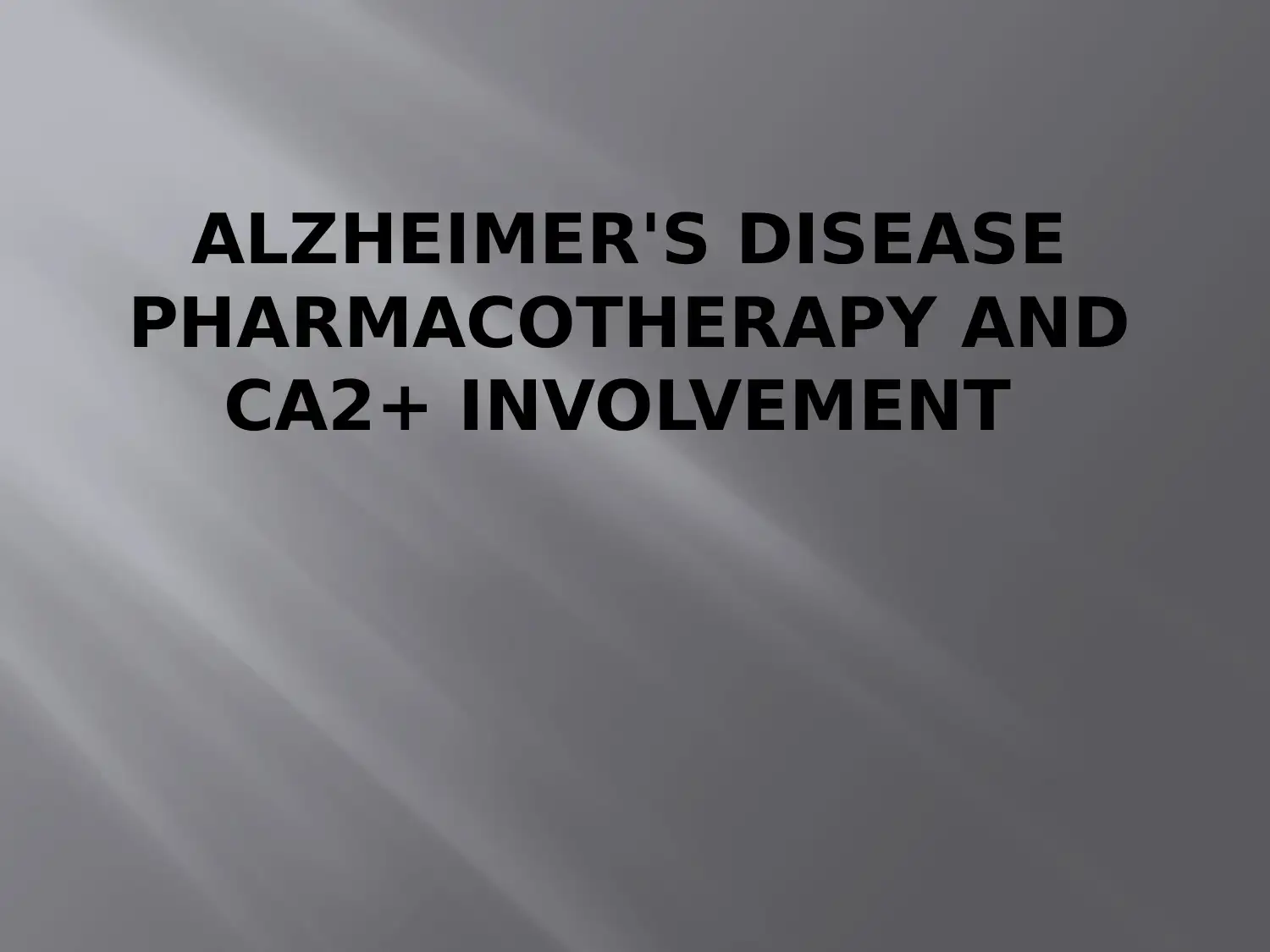
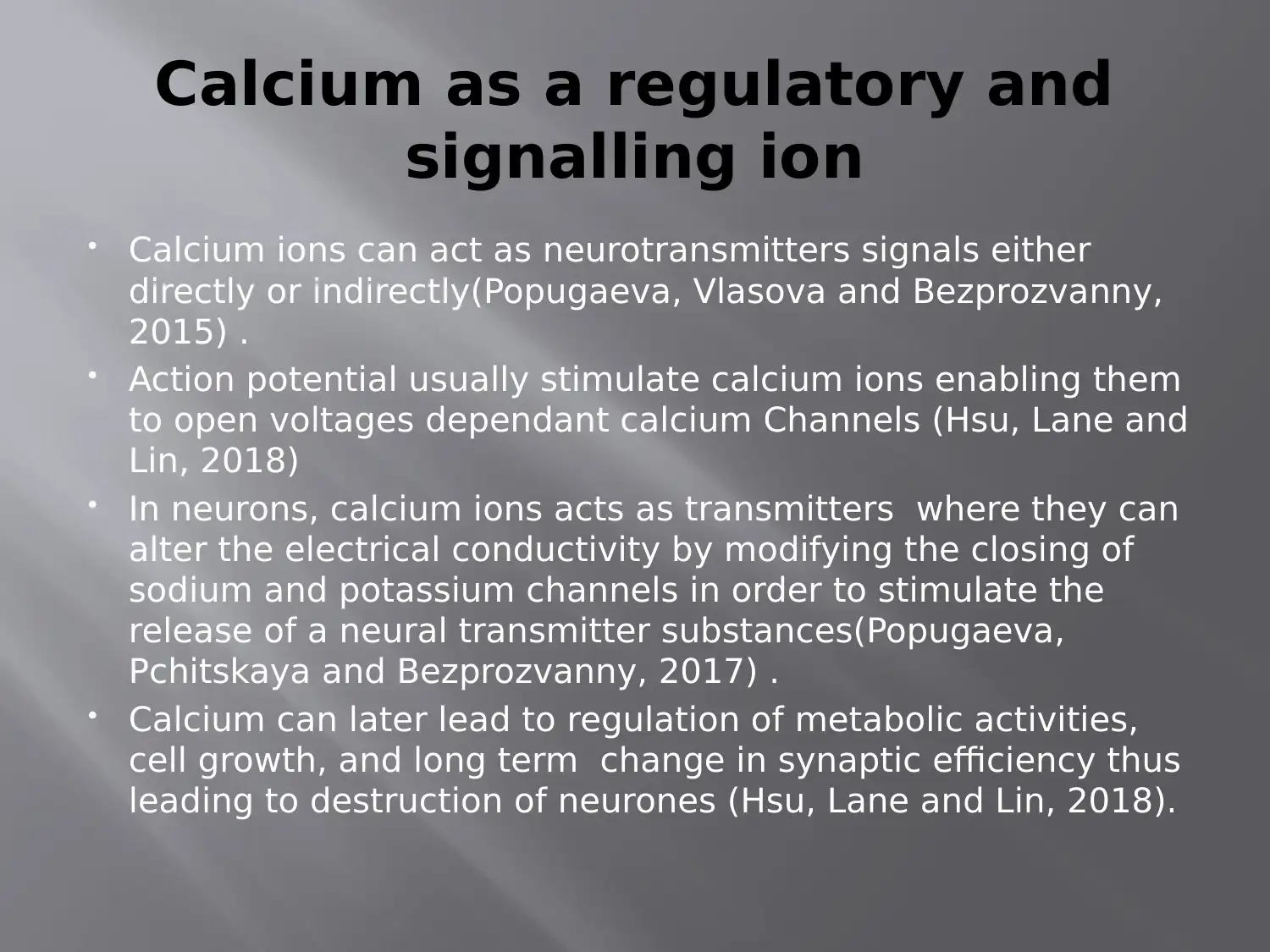
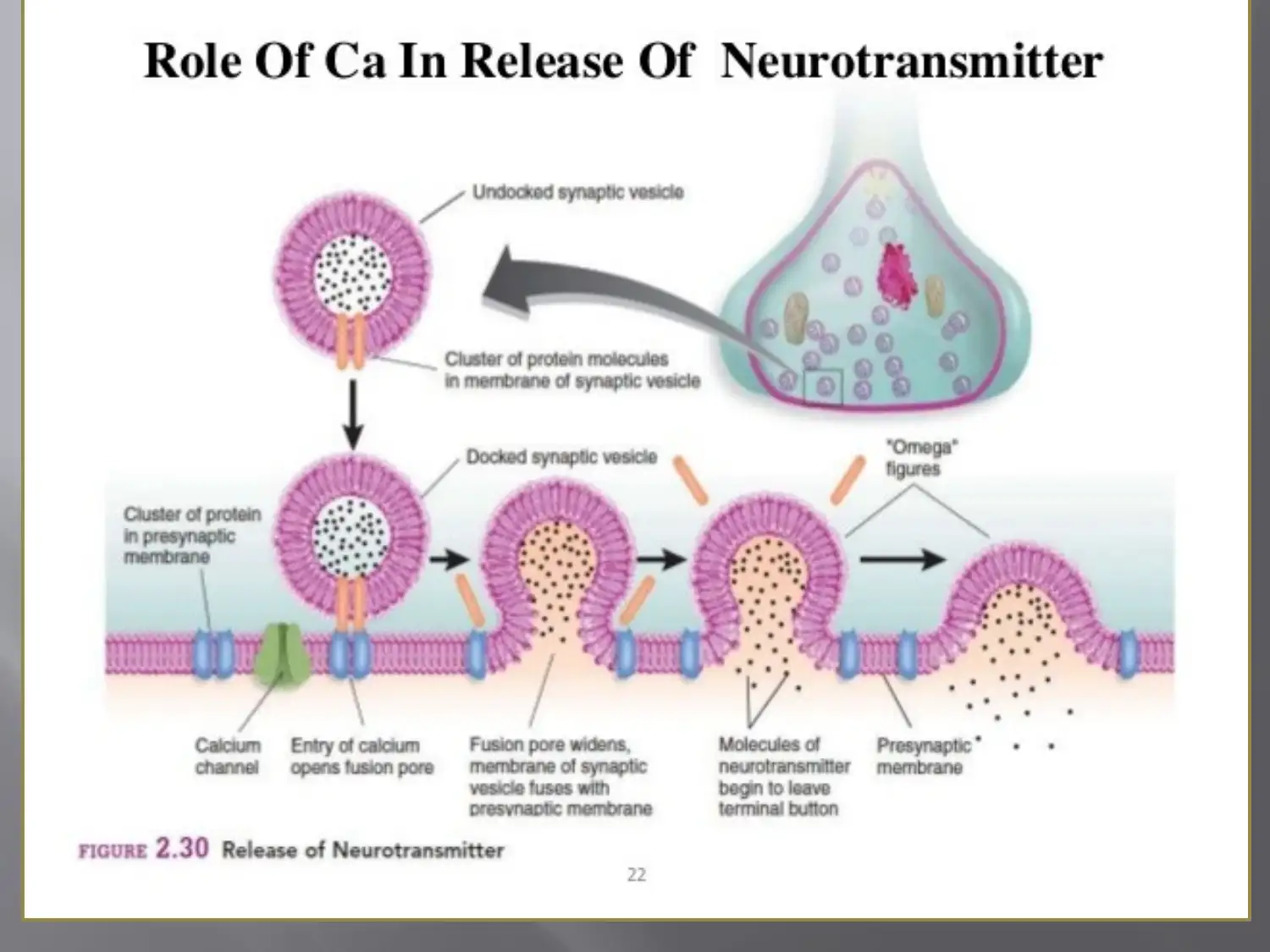

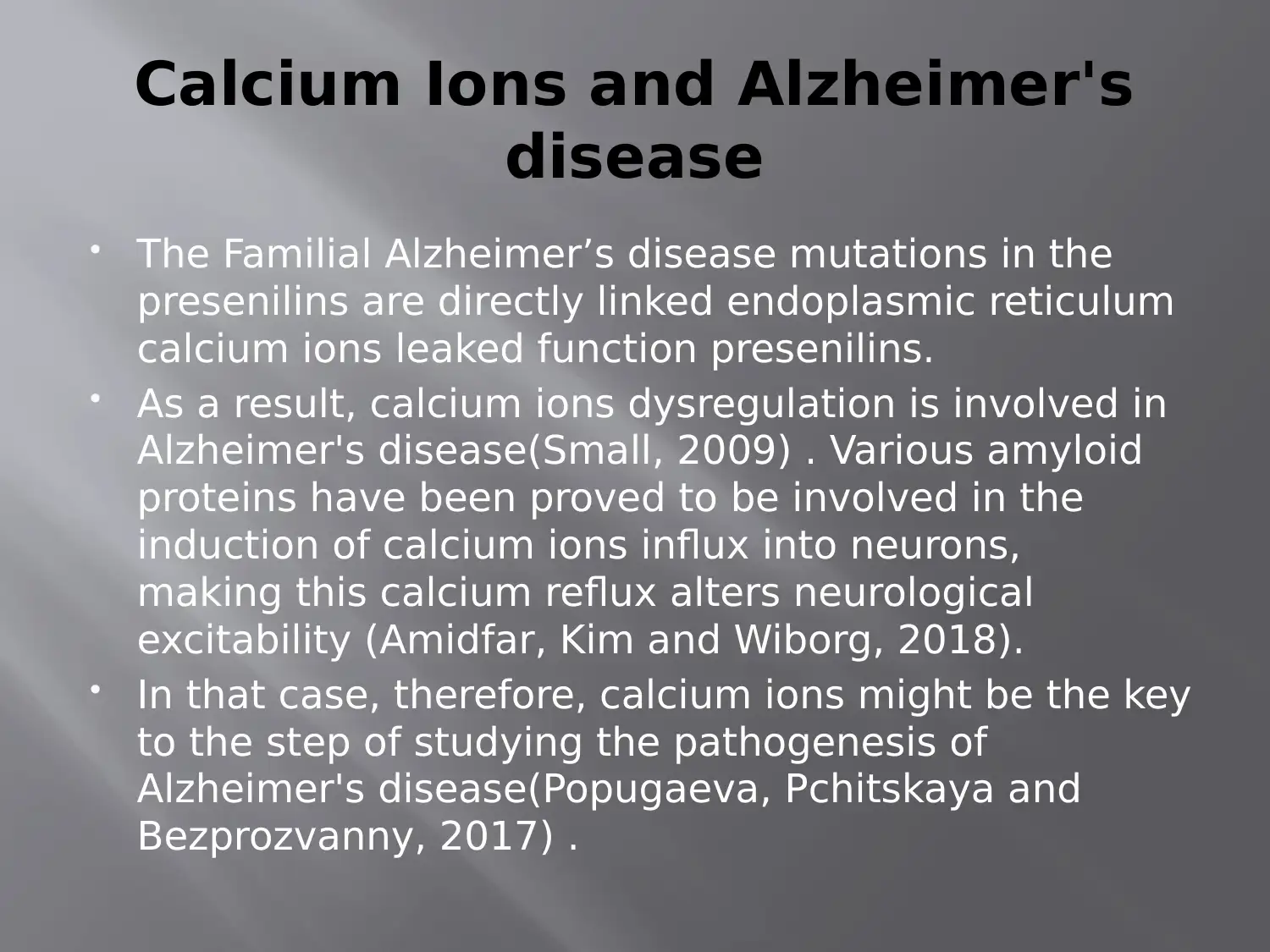
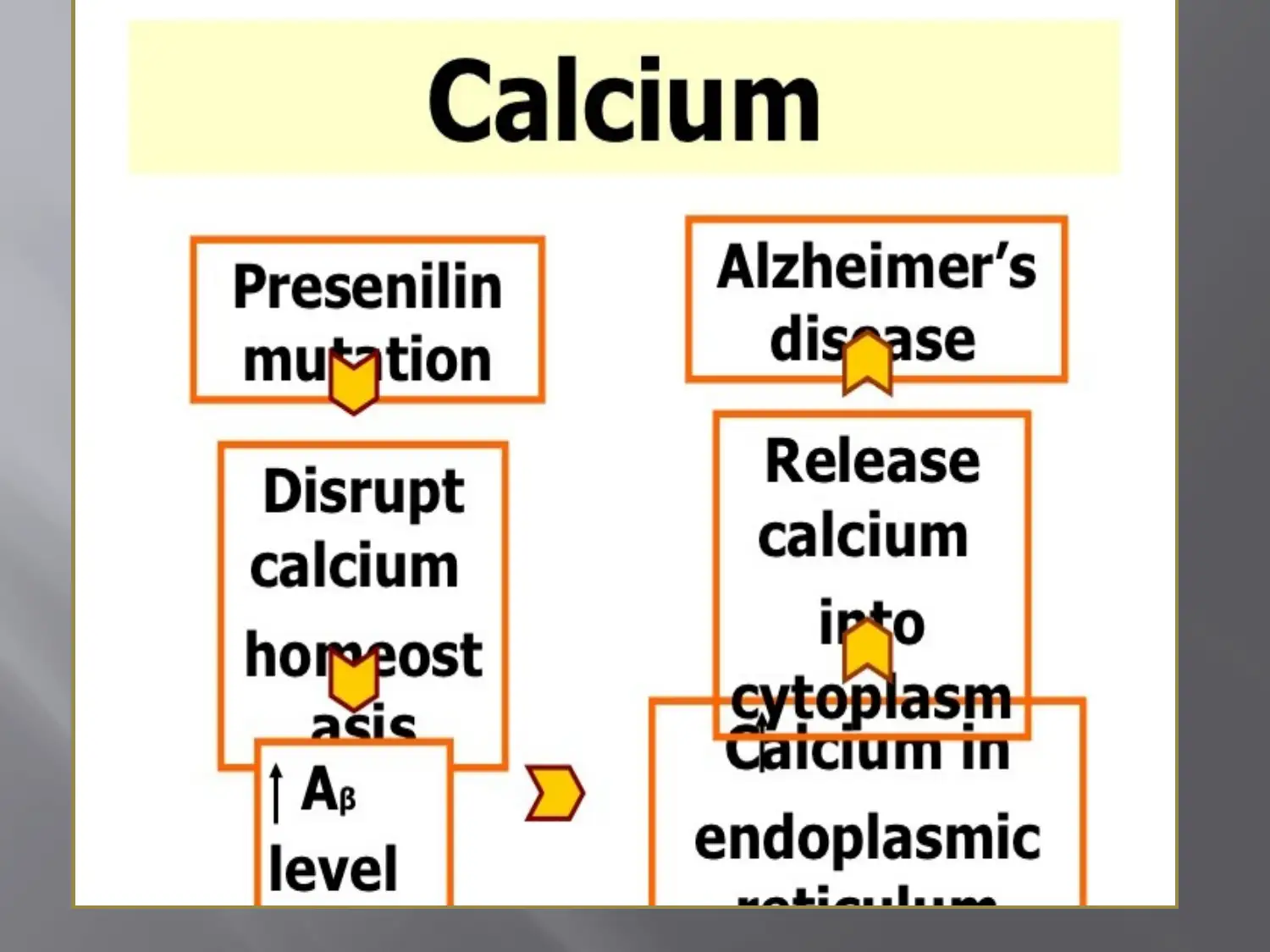
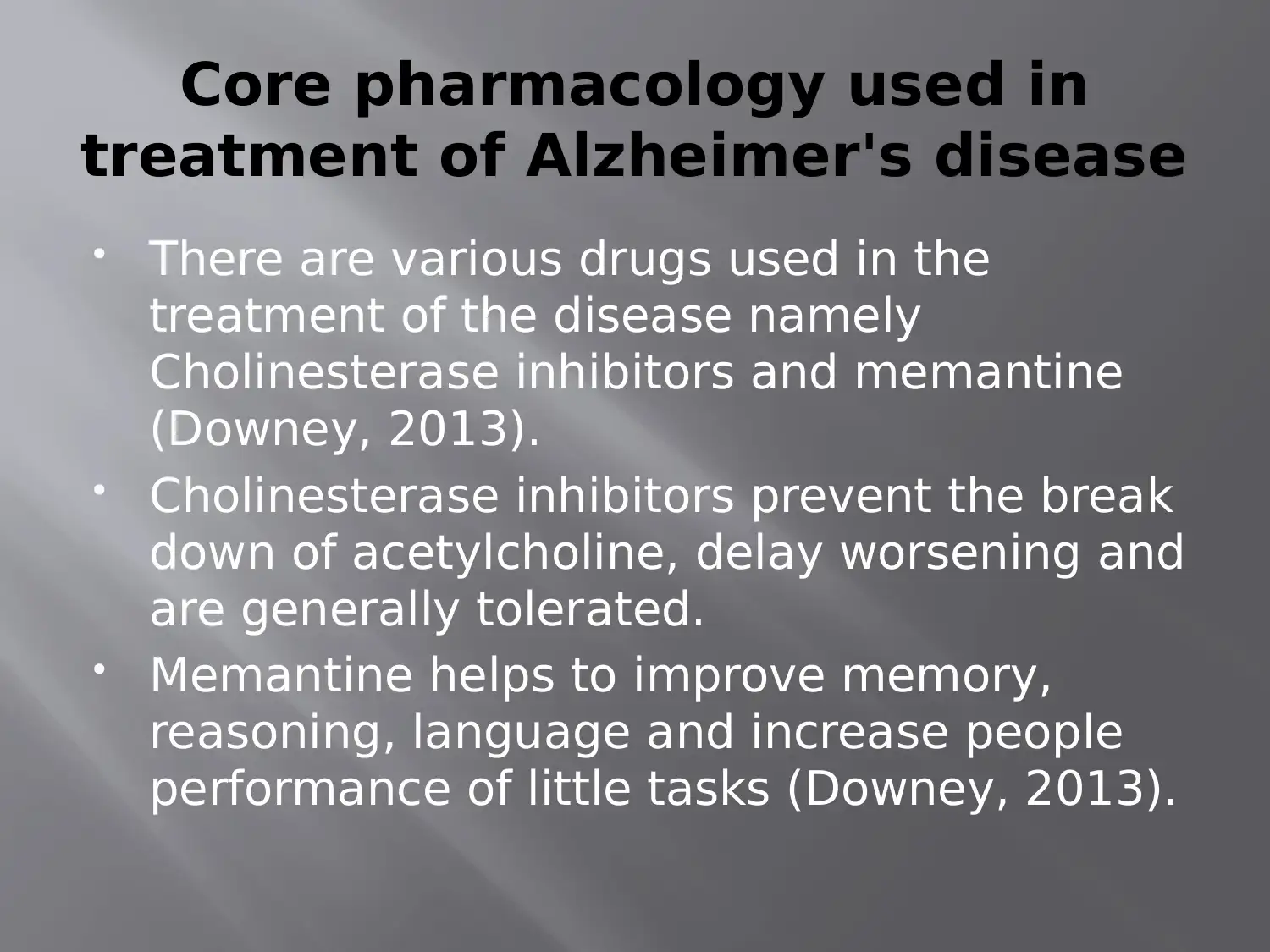
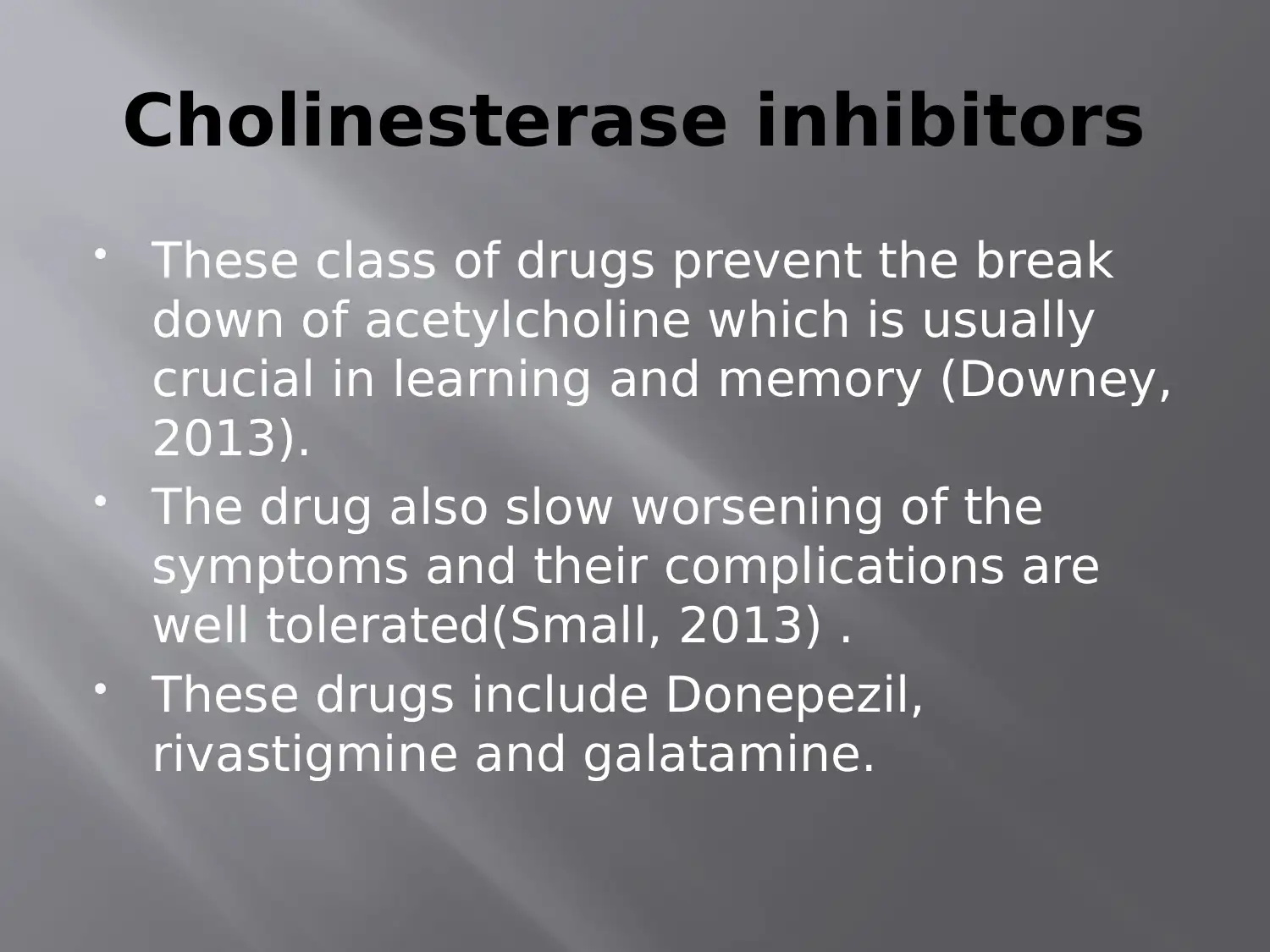
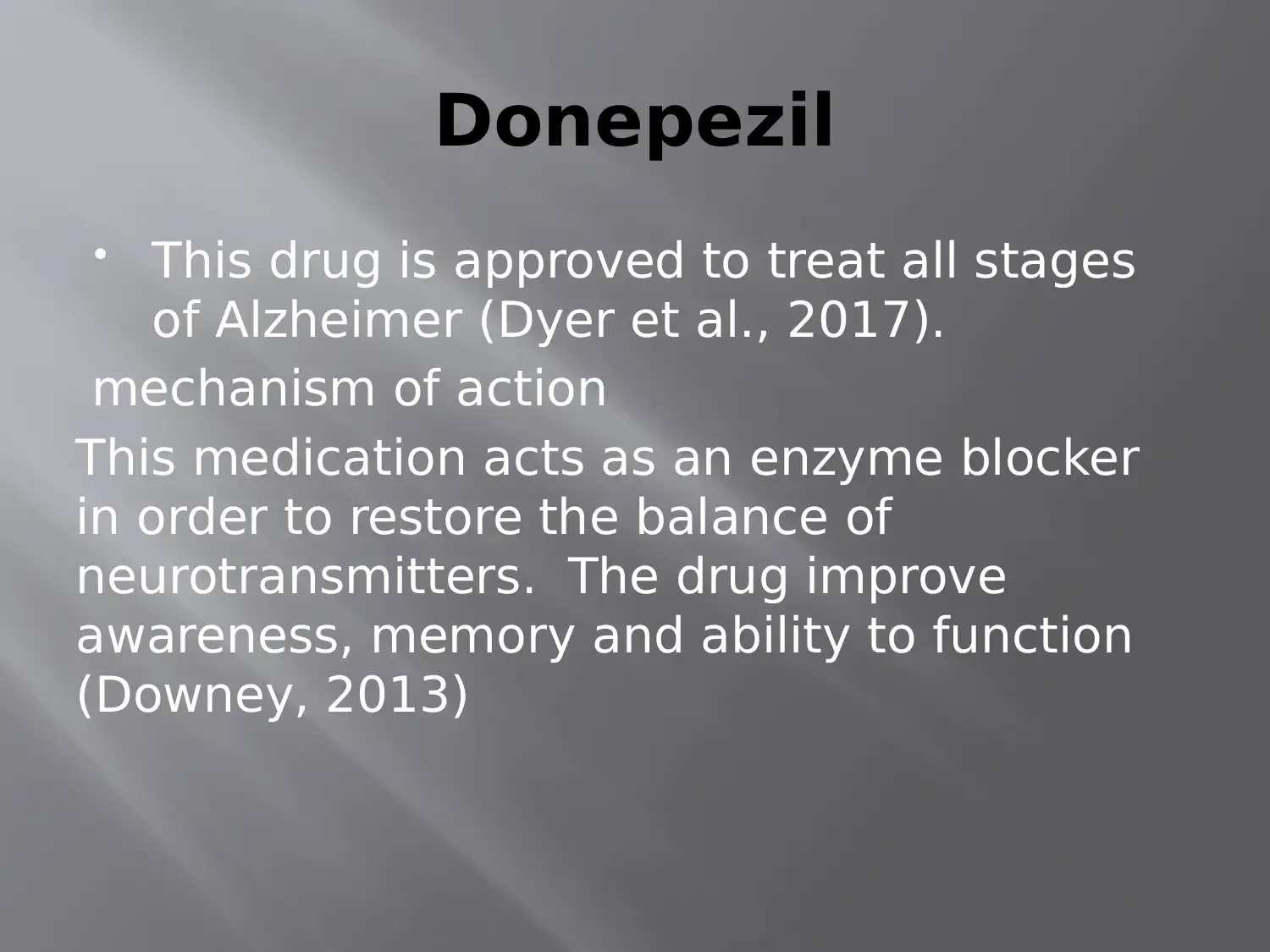
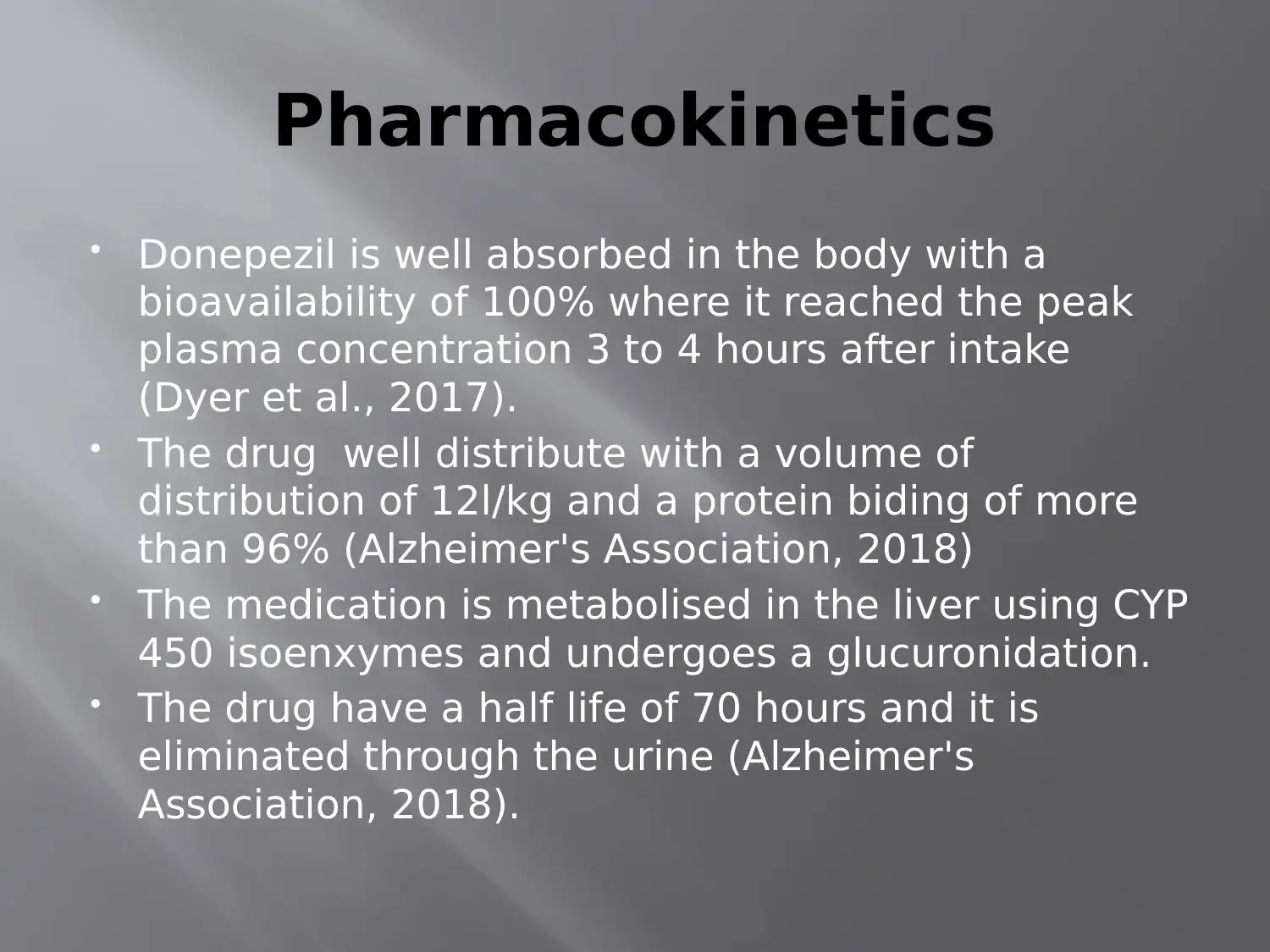

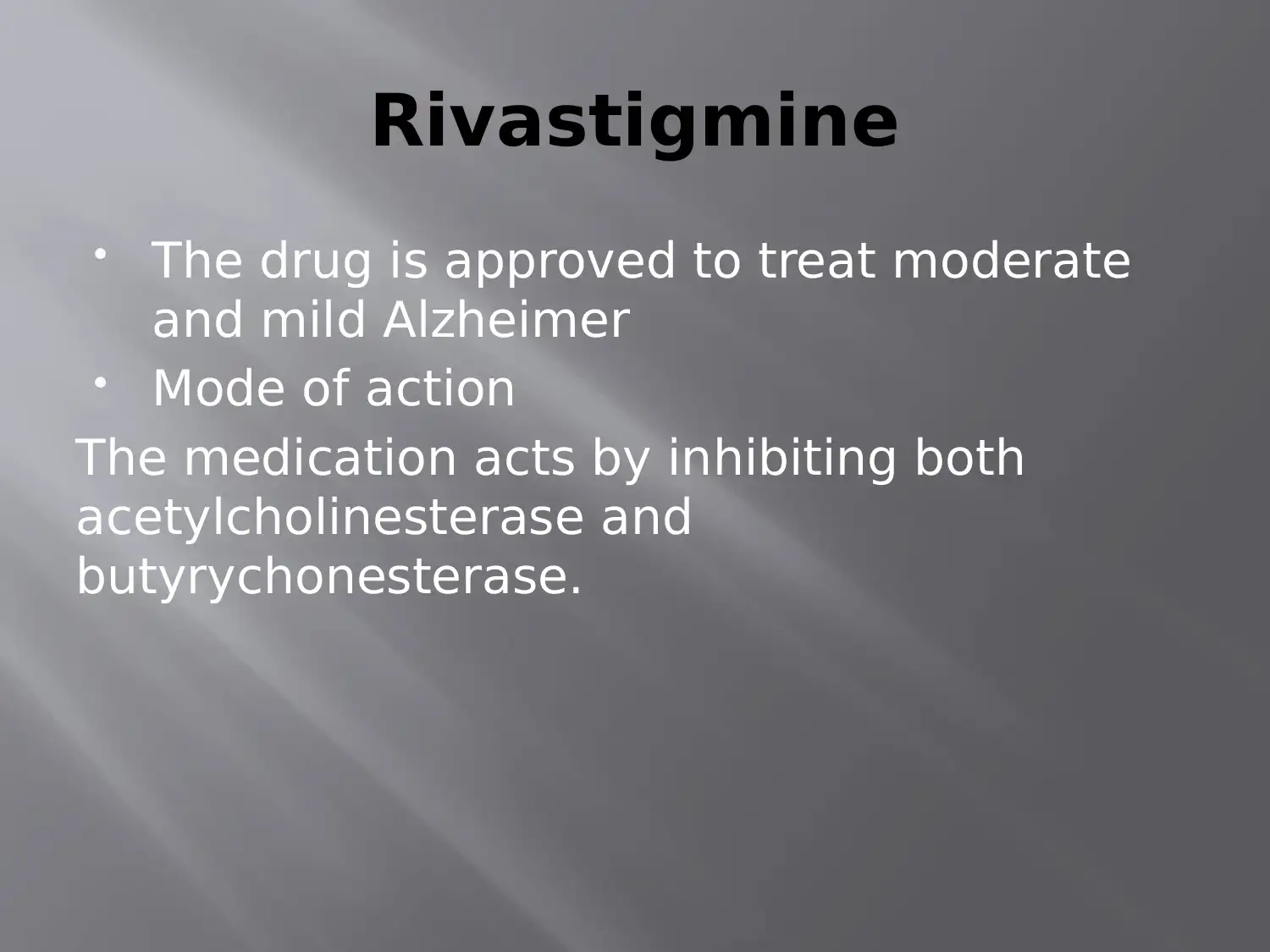
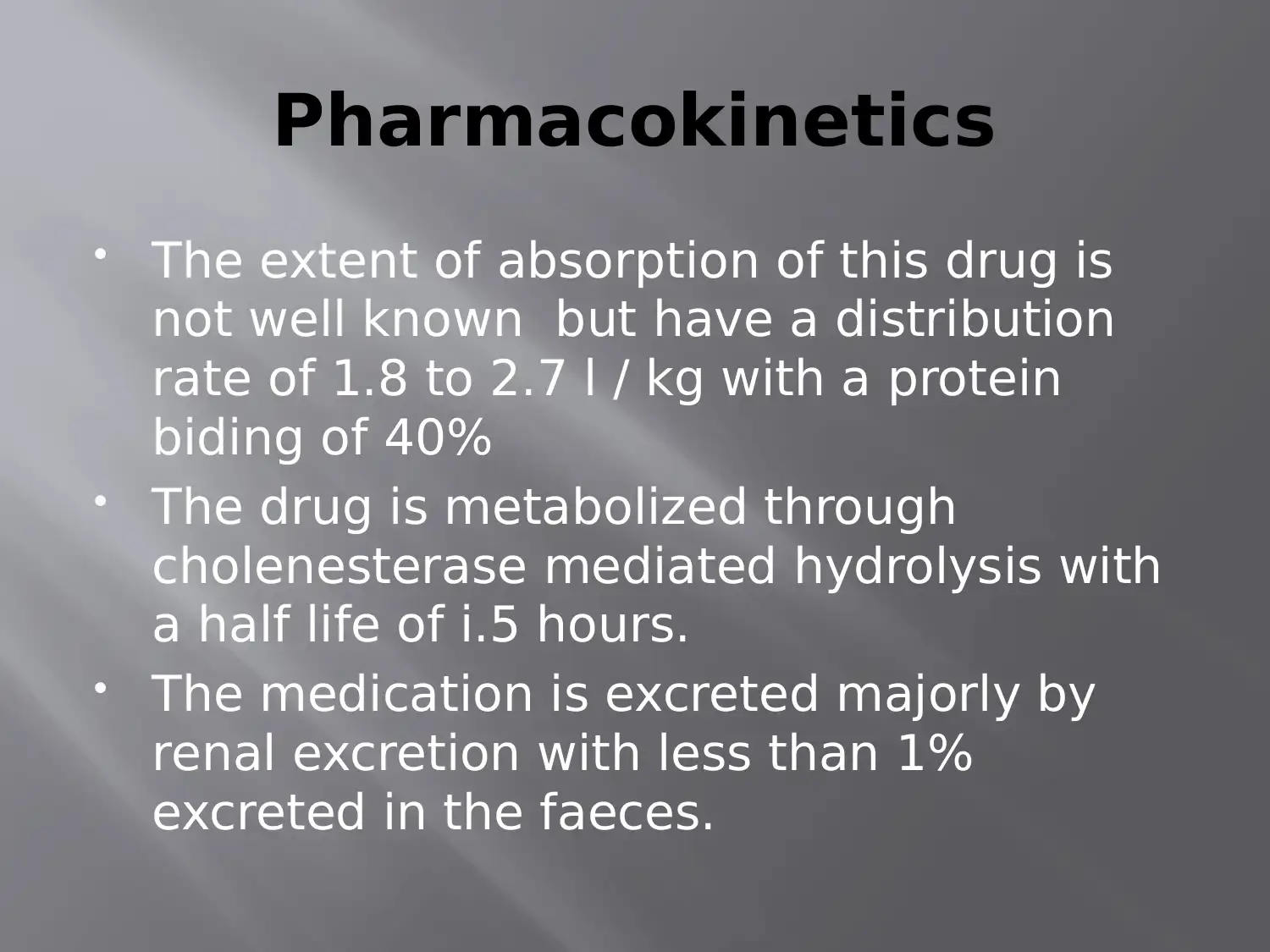



![[object Object]](/_next/static/media/star-bottom.7253800d.svg)